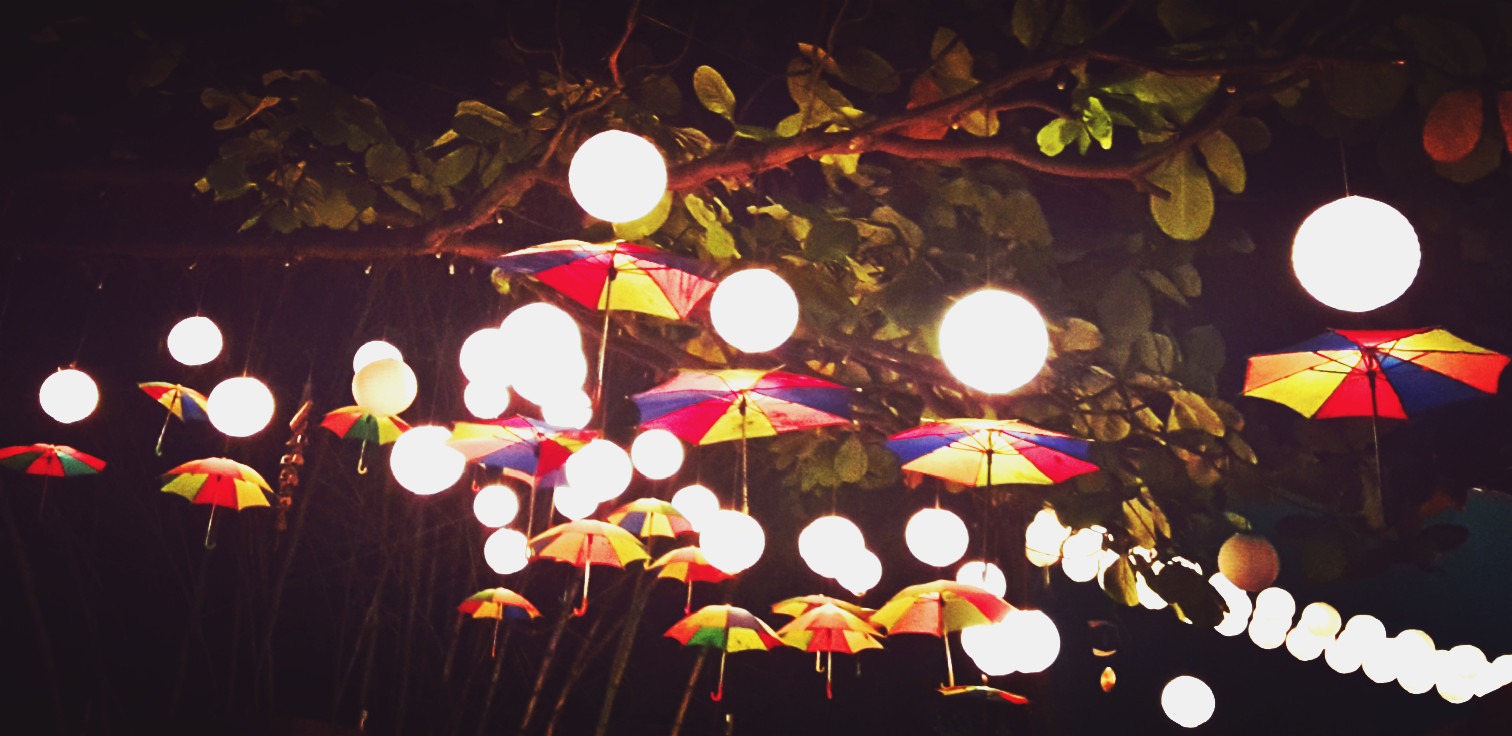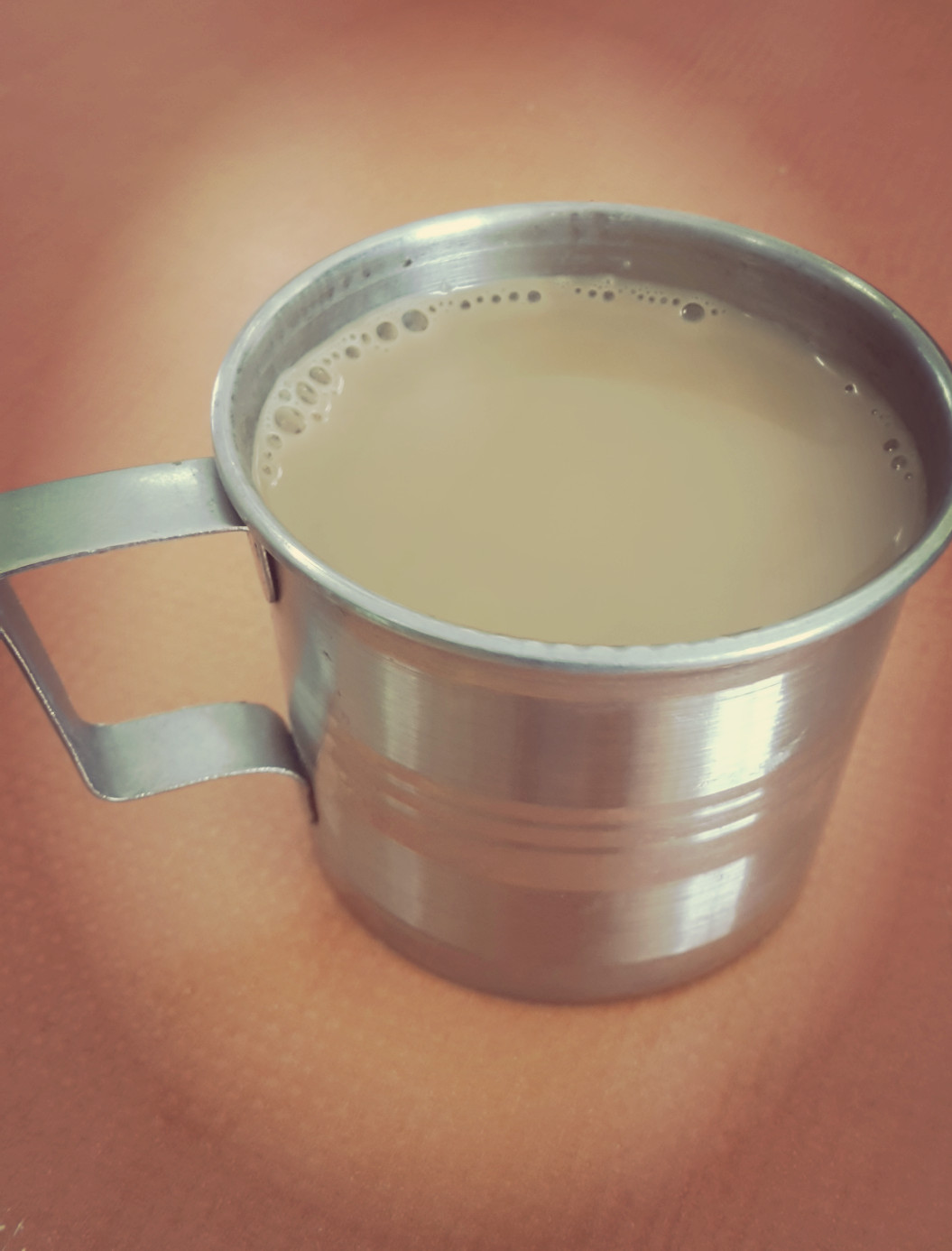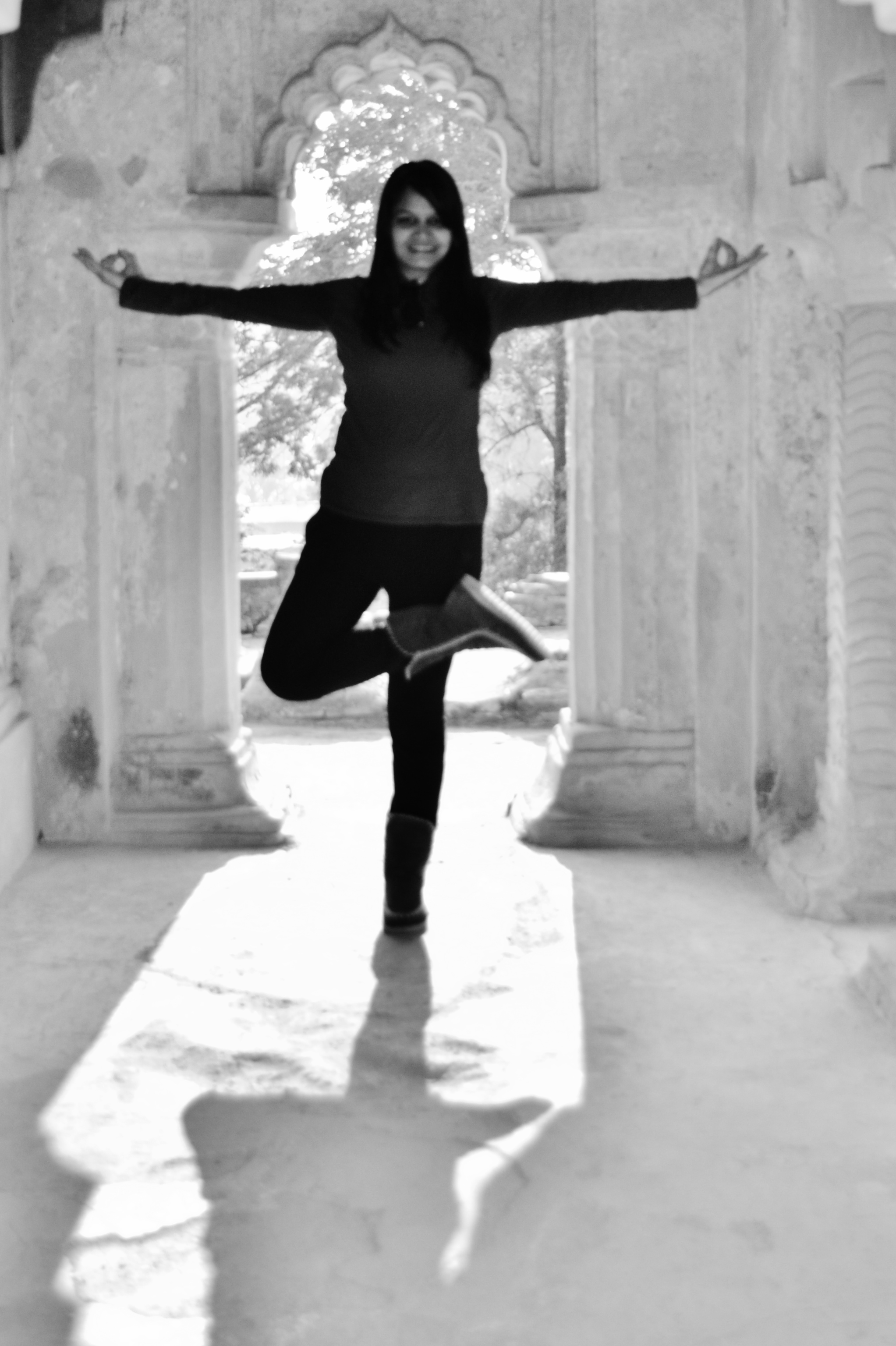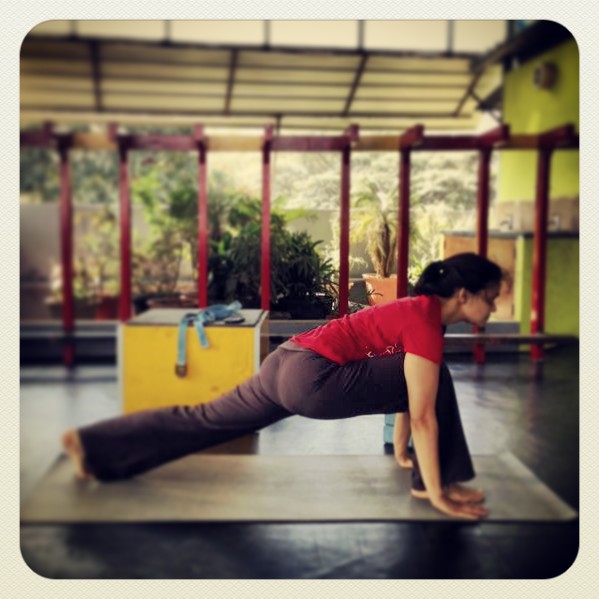At the end of the yoga session today my teacher talked about his belief regarding ‘Mindful Observation of Thoughts’ (which will make for another interesting blog post). The gist of it was relevant to the eternal quest for inner peace. He said that we spend our lives searching for this inner peace. We look for it in our thoughts, our surroundings, perhaps in the food that we eat, the people who we choose to be with…however, we can’t look for peace outside and assimilate it within us. We have to create a silence within us for peace to reside, and look at life from the vantage point of this silence. And that is when you will be in a state of bliss.
So here are 5 ways to cultivate the silence within:
1. Spend 5 minutes every day observing your thoughts. Make an effort during these 5 minutes to not sit in judgement of the thoughts that are passing through your mind. Also make an effort not to relive the emotions brought about these thoughts, be they positive or negative.
2. Start your day before those in your house do. Even if it’s just 15 minutes early. Spend those first 15 minutes of the day with yourself. Water your plants. Drink lukewarm lemon and honey water. Stretch. Smile. Read. Spending 15 minutes daily with yourself will ensure you nurture a more fulfilling relationship with yourself, and this will ensure better quality of your days.
3. Pursue an extra-curricular activity passionately. So if you’ve always wanted to learn photography, do so now. If you’ve always wanted to learn karv maga, do so now. Making time and effort to pursue something you’ve been putting off creates a behavioural pattern which tells you that what you want to do can be fulfilling, and enables you to put yourself first before the rest of life.
4. Accept the situation and work around it. You might not like your job, but until you change it, deal with it. You might not like your neighbour, but until you live next to each other, deal with it. You might not like your current haircut, but until it grows out, deal with it.
5. Breathe deeply. Whether you are stressed, overwhelmed, happy, annoyed, joyful, irritated, elated, blissful, worried, tired, energetic, optimistic, pessimistic, disappointed, fascinated, delighted….
How To:
- Start with standing in Tadasana.
- Bend at your waist and place your hands on the floor next to your feet. Make sure to align your toes and your fingers. Spread your fingers wide on the floor so that your body weight can be evenly supported.
- Now lift your right leg up off of the floor and place it as far back on the floor as you can. Do the same for the left leg.
- Make sure your wrist, elbow and shoulder are in one line. And your body should be parallel to the floor. Lock your knees and elbows.
- Pull your stomach in and make sure that your abdomen does not sink towards the floor.
Variations
- For a more intense hold, place your elbows on the floor making sure that the elbow and shoulder are in one line.
- You can also bend your elbows and lower yourself half way down to the floor and hold yourself in this position.
Benefits
- Strengthens your wrists, arms and shoulders.
- Great to strengthen the spine.
- Tones the abdomen.
Contraindications
- Do not practice if you have wrist or shoulder injuries.
- Practice with great caution if you have back problems.

@Malaka Spice
It’s been close to 10 days here and my routine here is as challenging as ever. I realize that if it’s your first time here, then it does take a while to adjust and adapt. The first time I had a 4 hour practice I was incredulous … and didn’t know how to deal with it. Rather, I didn’t know how to make the most of it. When I practice at home it’s only for an hour and a half, and by the end of it I’m drained out. So the first few days here, I was always exhausted. So much so that I felt I couldn’t give the best in the asanas and always felt sloppy and ungainly throughout the practice. Mondays and Tuesdays specially, since practice on those days is almost 4 hours long, and by the time I’m done with practice its an ordeal just to walk home. My fantasies these days centre around buying an apartment next to the institute so that I can crawl home in no time and surface again only for the next class.
However, now I’ve started to get used to the routine. I’m actually able to make the most of the extended practice sessions. In fact, 2 hours is just about enough time for a satisfying practice…how I’m going to sustain this when I’m back in Bangalore is the stuff other blog posts are made of.
Yesterday I had my class in the evening (where I’m referred to as ‘Bangalore’, and another

Milk tea just this once 🙂
girl is called ‘USA’, oh and then there’s ‘Madam China’ in the 6 am session). It was an amazingly intense session. The class was fast paced with a focus on stretching the lower body (Janu Sirsasana, Paschimottansana, Baddhakonasana etc). Finally we did the Upavista Konasana, which is a challenging pose for me. I slowly made my way down and eased my torso onto the floor. I remember the days when I started practicing yoga and this pose was a big challenge. I wouldn’t be able to extend my back and my hip joint was stiff. As the years went by, I was still pretty reluctant to practice this pose because it didn’t come naturally at all and it was frustrating. Even now, sometimes I’m able to execute this pose well, and sometimes I feel like lead.
Yesterday I was able to ease myself down and placed my forehead on the floor. I stayed there kind of happy and satisfied with myself. There’s always an element of pleasant surprise also, because some days your body can extend and some days it just doesn’t. This reverie lasted until I heard, “BANGALORE! You’re sleeping! Extend more! Walk forward with your hands!!! That’s it, that’s good. Trance mein chali gayi thi phir se.”
And I realized that for the most part, this is how I practice. I arrange myself into a pose and then my mind says, “This is it, you’ve done well. You’re done.” And then my pose goes dead, and progress stops. Or, as the teacher said, I fall asleep. So when I was told to extend more, I had to push through the limitations of my mind (kind of still the internal dialogue) and discover if I could, in fact, go further. I realized that I could, and for that little bit of time I experienced new life. And received a bit of enlightenment.
The Halasana is a pose that we do daily in class. We use props to ensure that the spine and neck are straight. The picture is of me doing the Halasana many years ago. When my internal dialogue was loud and overpowering. I’m sure it’s improved over the years. And after this class, I know how to work in this (and in all other asanas).
Halasana (Plough Pose)
How To
- Lie down straight on your back making sure your head lies on the floor.
- Exhale, bend your legs at the knees and bring your knees close to your chest.
- Lift your buttocks off of the floor supporting your back with your hands.
- Make sure to plant your elbows firmly on the floor.

- Bring your body perpendicular to the floor, until your sternum touches your chin.
- Gently extend your legs out behind your head.
- Keep your face and neck relaxed.
- Practice with your arms stretched out behind and fingers interlocked to relive pain and cramps in fingers, hands, wrists, elbows and shoulders.
Benefits
- Relieves fatigue.
- Helps to calm down the mind.
- Relaxes your eyes and brain.
- Controls hyper tension.
- Improves digestion.
- Lengthens the spine and improves alignment.
- Reduces insomnia and anxiety.
- Relieves stress-related headaches and migraines.
Contraindications
- Don’t practice during menstruation and if you have cervical spondylosis.
Yesterday I took a break to track down the local Ramdev shop here in Jorhat. I stocked up on my usual goods such as aloe vera and amla juice along with honey. A new product I found was Patanjali’s Tejus Tailam. I’ve been meaning to start my daily Abhiyanga routine for this season, but hadn’t really gotten around to it. Abhiyanga or abhiyangam is an Ayurvedic routine to keep your body healthy during the winters. This is something that is widely practiced here. It basically involves massaging your body from head to toe using an Ayurvedic or organic oil and letting the skin absorb this oil for about 10-15 minutes. It’s great to let a masseuse work on you every once in a while, but a home practice of abhiyanga is something that you can easily incorporate into your daily routine and really reap the benefits.
How To:
- Make sure the oil is warm. You can heat it or just immerse the bottle in some hot water. Here too, like everywhere else, use your instinct. Get the oil warm enough to get your skin feeling good.
- Next, take some oil in the palm of your hand and work the oil into your soles using your finger tips or your knuckles. You want to get the circulation going, so be firm instead of gentle.
- Work your way up your legs using long straight strokes on limbs and circular strokes on the joints such as knees, elbows etc. For your stomach, work up from the right side, across, then down the left.
- Use circular movements on your face.
- You can incorporate a head massage in your daily abhiyanga as well, although for people with long hair, this can be somewhat cumbersome.
- Make sure to use lots of oil, your body should get really greasy and slippery.
- Let your body soak the oil in for about 15 minutes and then bathe/shower.
Why do this daily? Benefits?
- Great to flush out the toxins that tend to accumulate during the winter season.
- Keeps your joints healthy.
- Keeps your skin healthy and supple.
- By massaging your muscles every day, you decrease the risk of injury during the winter season. Also, if you have sore muscles due to a workout or injury, abhiyanga massage speeds up the process of recovery.
- Because it is so relaxing, it promotes deeper and more restful sleep. You wake up refreshed and rejuvenated.
Along with this Ayurveda also recommends sleeping at least 8 hours during the winters. Attune your body to the sun, sleep as soon as you can post sunset and wake up with the sun.
Drink a lot of warm fluids throughout the day, even warming up your water.
For the winter months, avoid raw foods and veggies. Steam your salads.
Ashwasanchalanasana (Horse Pose/Low Lunge)
How To
- In the Padahastasana place your fingers next to your toes so that they are in line with each other.
- Lift your right leg off of the floor, take it back and place it on the floor.
- Look forward.
- Make sure that your left knee is in line with your left ankle. The knee should NEVER go beyond the level of the ankle.
- Look straight ahead.
- Repeat on left side.
Variations
If your legs and thighs are a bit stiff, or if you have weak knees and ankles, then place your back knee on the floor.
Benefits
- Great to strengthen the legs.
- Relieves stress by opening up the groin region and the hips.
- Helps in stretching and strengthening the spine.
- Opens up the chest and enables deeper breathing.
- Provides a massage to the abdominal organs and stimulates digestion.
- Corrects curvature of the back.
- Alleviates symptoms of sciatica.
Contraindications
- Practice with caution if you have a knee injury.
- Be cautious if you’ve had a neck injury. Don’t strain to look forward, look down instead.
- Practice with caution if pregnant. If required place the back knee on the floor.
- Practice with caution if you have a back injury.
- Do not practice if you have stomach ulcers.
- Do not practice if you’ve just undergone abdominal surgery.
Here in Jorhat it’s really really cold. In Delhi it’s colder still. While in Bangalore I got phone calls from my mother in law fretting about my health because in Bangalore I wasn’t consuming the sweet goodies that are a staple diet during the winter season in Delhi. When a yoga friend from Hyderabad asked me about sesame seeds, I thought I’ll gather my thoughts together about this seed and how it benefits us. Here are the top 5 reasons you should consume sesame seeds during the winter season:
- According the Ayurveda, sesame increases body heat. Which is why it’s used in laddoos and gajak made during the winter season. However, moderation is the key. Since most of us haven’t had our doshas examined and determined by a practitioner of ayurveda, it’s best to be safe and moderate the quantity of sesame that you consume, rather than taking a dosage every day (I’m anti anything which seems like ‘medicine’).
- Sesame oil is great for hair. Personally I’ve tried Baidyanath’s Bhringraj oil, and it makes your hair strong and silky. And conditions it too. Add to that the heating nature of the seed, and you’ll have a stimulating head massage. It’s great for a skin massage as well. A lot of people use it for babies as well!
- Another reason for consuming these seeds in moderation is the high fat content. However, if consumed in moderation these seeds actually help in lowering bad cholesterol, thereby decreasing the chances of heart disease, stroke and heart issues.
- In India, a lot of goodies made for expectant mothers contain sesame seeds. This is because the folic acid in these seeds ensures healthy foetus growth as well as good health for the mother.
- Last but not least, sesame seeds are great for bones and therefore prevent osteoporosis.
So, buy the goodies if you’re in the colder parts of India and eat them without guilt. Add them to salads. And of course, get the oil and enjoy some invigorating head massages with it. In fact, since the oil is edible, drizzle it on salads or use it for cooking!
Namaste!

A video on how to practice the Bandhas. These can be incorporated in your daily yoga practice.
A chance conversation in yoga class recently got me thinking about the definition of health. We talked about the misconceptions prevailing today, and how these are fuelled by the life and times that we live in. As the year comes to a close, we can all take a look at our health again and make the right kind of resolutions for the next year.
How frequently have you met people who have decided that some condition is a part of their lives forever now? People who have resigned themselves to living with something such as a chronic back ache, allergies, chronic headaches or migraines, joint pain etc. People who don’t go swimming because of a cervical condition. People who can’t travel for long distances in a train or a car because of backaches. People can’t climb the stairs in their own houses because of ankle/joint pain! And what’s worse is that many people have accepted these problems as a part of their lives instead of issues that must be addressed.
So, if your health gets in the way of going through life pain and medicine free, then you’re not healthy. I have a friend who feeds her kids really well, she’s worried to death about their hygiene and their school work. But every fifteen days I hear that they are running fevers. Both children fall sick around the same time…and when they’re not sick then she is! Now, she’s doing everything she can to maintain good health…but for some reason I feel that if children aren’t climbing trees and running around getting into trouble…then there’s something wrong. Imagine kids who are bundled up under blankets with thermometers when they aren’t doing homework. Will they make for well-rounded adults?
Similarly if every time you have to go on vacation, you think of all kinds of conditions you could get (allergies and the like) and end up taking a bunch of tablets and capsules with you, then you’re not healthy. By all means take along your first aide kit, but if you’re planning on reaching for it daily, then your health is interfering with you having a good time, and being on vacation 100%.
Also, the thin are not necessarily the healthy. How thin you are, or how hot and young you think you look, is not a sign of how healthy you are. Because good health is a combination of many factors. Good health is related to how far you can walk, how long you can move your body to songs you like (and some that you don’t like), how quickly your body recovers from injuries playing sports that you enjoy, how well you sleep after a long day, how much you can smile even when you see your ‘to do’ list increasing, how much of a spring there is in your step, how bright the shine in your eye…you get the drift.
So you may be a 40 yr old who doesn’t look a day above 25, exuding hotness, but if your body is constantly sick, your mind constantly irked, then all that youth and hotness is just gold plating, not real gold.
And so, as the year draws to a close, it’s a good idea to do an appraisal of the state of your health. It’ll help you make the right resolutions for next year.
I just realized that a lot of people might not be aware of my YouTube channel, but might still be interested in my videos about Yoga asanas. So I’ll begin with sharing one about the Simhasana, which is a great pose to prevent wrinkles and keep your throat muscles healthy. I’ve spoken about all the benefits of the Simhasana in the video.
Happy viewing and don’t forget to subscribe and leave a comment!
Janu Sirshasana (Head to Knee Pose)
How To:
- Sit with both legs spread out in front of you. Make sure you’re balanced on your buttocks with your feet together and your toes pointing upwards.
- Start with the left leg. Bend it at the knee and bring your foot as close to the groin region as possible. Make sure the sole of your foot is parallel to the right thigh. Also make sure the left knee is on the floor and not floating in the air.
- Inhale at this position.
- Now exhaling start to reach out to grasp your toes. Don’t worry if you are unable to grab your toes. Make sure not to curve your back. Imagine that your spine is extending upwards towards the ceiling and you need to work on making your back concave so that your chest is slightly outwards. You want to aim at getting your abdomen on the thigh.
- Go as far forward as is comfortable and breathe for some time in this pose.
- Once you’re comfortable take your awareness to your torso. You want to try to bring the left side of your body close to the right leg and the right side a little away from the leg.
- Make sure not to hunch your shoulders. Throw your shoulders back.
- Inhale as you come up.
- Repeat on the left side.
Variations
- If you’re unable to grab your toes you can also use a belt. String the belt around the balls of your feet to ensure that your toes continue to point upwards as you come down.
- If the knee of the folded leg doesn’t touch the floor, you can place a cushion or a folded blanket under it.
- Pregnant women should practice this only until the second trimester.
Benefits
- Great stretch for your back, legs and shoulders.
- Increases flexibility of the hip joint.
- Massages the kidneys, spleen, pancreas and liver, thereby stimulating their functioning and helping to detoxify the system.
- Stimulates digestion by massaging the abdominal organs and the pelvic region.
- Relieves menstrual pain.
- Eases the effects of stress, tension and strain on your body and relaxes the mind.
- Helps in promoting good posture by correcting the curvature of the spine.
- Helps in alleviating depression and anxiety because it tones and massages the adrenal glands.
- Great to alleviate fatigue.
- Can help in treating symptoms of high blood pressure and insomnia.
Contraindications
- Practice with caution if you have asthma or diarrhoea.
- Practice with caution if you have slipped disc, sciatica or hernia.



